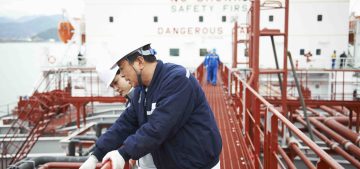In the oil and gas industry, worker safety is paramount, and two of the most critical areas where safety knowledge is essential are hydrogen sulfide (H2S) awareness and confined space entry. These are high-risk environments that can lead to severe injury or even fatality if proper precautions are not taken. Both topics require thorough training to ensure that every worker is well-equipped to recognize potential hazards and respond appropriately. This blog will delve into the importance of H2S awareness and confined space entry training, emphasizing how vital these skills are for protecting lives and ensuring compliance with industry regulations.
What is Hydrogen Sulfide (H2S)?
Hydrogen sulfide (H2S) is a colorless gas that is extremely toxic and flammable. It is a byproduct of the decomposition of organic matter and is often found in natural gas, crude oil, and other hydrocarbons, making it a common hazard in the oil and gas industry. H2S exposure can be fatal at high concentrations, as it affects the respiratory system and can lead to suffocation. Even at lower concentrations, prolonged exposure can cause health issues like eye irritation, nausea, and dizziness.
Why is H2S Awareness Training Crucial?
H2S awareness training is essential because of the potentially life-threatening nature of this gas. Workers in the oil and gas industry must be trained to recognize the signs of H2S exposure and know how to use safety equipment like gas detectors and respirators. Effective training should cover:
• Hazard recognition: Understanding where H2S might be present and how to identify high-risk areas.
• Proper use of personal protective equipment (PPE): Ensuring workers know how to wear and use gas masks and respirators to protect themselves.
• Emergency response protocols: Knowing how to act swiftly in the event of an H2S leak, including evacuation procedures and first aid.
• Regulatory compliance: Adhering to occupational health and safety standards, such as those established by OSHA and the American Petroleum Institute (API).
Without proper H2S training, workers are at a high risk of exposure to this dangerous gas, which could result in severe health issues or fatalities.
Enroll in our Hydrogen Sulfide (H2S) Safety Awareness Training today to ensure your team is adequately prepared to handle H2S risks.
Confined Space Entry in the Oil & Gas Industry
A confined space is any area that is not designed for continuous human occupancy and has limited access points, such as storage tanks, pipelines, and silos. These spaces can be hazardous due to the potential for toxic gas build-up, limited ventilation, and the possibility of entrapment. In the oil and gas industry, workers often need to enter confined spaces for maintenance, cleaning, or inspections, making confined space entry training essential for ensuring their safety.
The Risks of Confined Spaces
Confined spaces present a unique set of dangers, including:
• Oxygen deficiency: Many confined spaces have poor ventilation, which can lead to a lack of oxygen, making it difficult to breathe.
• Toxic atmospheres: Gases like H2S, methane, or carbon monoxide can accumulate in confined spaces, posing a severe risk to workers.
• Fire hazards: The presence of flammable materials combined with limited ventilation can increase the risk of explosions.
• Physical hazards: Tight quarters, the potential for entrapment, and limited visibility can make navigation difficult and increase the risk of injury.
Why Confined Space Entry Training is Essential
Confined space entry training is crucial for workers who must enter these hazardous areas as part of their job. Key components of the training include:
• Risk assessment: Workers are taught how to evaluate the dangers of a confined space before entry.
• Permit-to-work system: A system that ensures confined space work is conducted under safe conditions, with proper documentation and supervision.
• Ventilation and gas testing: Workers must know how to ensure adequate airflow and check for toxic gases using gas detectors.
• Rescue procedures: In the event of an emergency, workers need to be trained in how to perform a safe rescue without putting additional lives at risk.
Proper confined space entry training not only helps to protect workers but also ensures compliance with health and safety regulations, reducing the risk of costly fines and shutdowns due to non-compliance.
Learn more about our Confined Space Entry Training and prepare your team for safe confined space operations.
The Importance of Continuous Training and Compliance
In addition to initial training, ongoing education and re-certification are vital in both H2S awareness and confined space entry safety. New hazards can emerge, safety equipment can be updated, and regulations may change over time, so it’s essential for workers to stay up-to-date with the latest safety protocols. Regular training ensures that teams are always prepared to handle any potential hazards they may face in the oil and gas industry.
Both H2S awareness and confined space entry training are not only necessary for worker safety but are also legal requirements. Non-compliance can result in hefty fines and a damaged reputation. By ensuring that your workforce is properly trained, your company can mitigate risks, maintain a safe work environment, and improve operational efficiency.
Conclusion
The oil and gas industry is fraught with unique hazards, and safety training is the key to preventing accidents and fatalities. Hydrogen sulfide awareness and confined space entry training are two of the most critical safety programs that workers need to undertake. By providing your team with comprehensive, up-to-date training, you can protect lives, avoid costly incidents, and ensure compliance with industry regulations.
Ensure your workforce is ready for the challenges of the oil and gas industry by enrolling in our Hydrogen Sulfide (H2S) Safety Awareness Training and Confined Space Entry Training courses today. Don’t wait until it’s too late – safeguard your team’s health and safety now!






